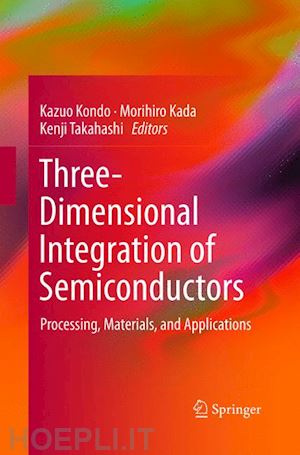
Questo prodotto usufruisce delle SPEDIZIONI GRATIS
selezionando l'opzione Corriere Veloce in fase di ordine.
Pagabile anche con Carta della cultura giovani e del merito, 18App Bonus Cultura e Carta del Docente
Kazuo Kondo is Professor at Department of Chemical engineering, Osaka Prefecture University. He took his PhD in Chemical Engineering at the University of Illinois in 1981. He has worked for Sumitomo Metal Industries, Hokkaido University and Okayama University. He has 200 research publications and 100 patents. His major research is Copper Electrodeposition for TSV. His research extends in various fields not only in electrodeposition, but also in battery and CVD. He is member of Electrochemical Society, IEEE, Society of Chemical engineering Japan, Japanese Institute of Electronics Packaging, Surface Finishing Society of Japan, Materia Japan, Electrochemistry Japan and Japanese Society of Applied Physics.
Morihiro Kada is the invited researcher of The National Institute of Advanced Industrial Science and Technology (AIST) and the part-time researcher of Osaka Prefecture University. Prior to joining to AIST and the university he was the consultant of Association of Super-Advanced Electronics Technologies (ASET). Since April 2007 he has been heading the Japanese national R&D project on 3D-Integration technology as the Project in ASET. Before joining to ASET, he had been the General Manager of the Advanced Packaging Development Department in Sharp Corporation. He has more than forty years experience in semiconductor packaging engineering, with major emphasis on developing chip scale, chip stack package and Three Dimensional-System in Package (3D-SiP) as the pioneer of 3D-Integration technology in the world.
Kenji Takahashi is a Chief Specialist at Memory Packaging Development Department, Memory Division, Semiconductor & Strage Company, Toshiba Corporation. He received a M.E. Degree of from Chemical Engineering at the University of Tokyo in 1984 and Ph.D. from Information Science and Electrical Engineering at Kyushu University in 2010. His major research and development is focused on semiconductor packaging and
chip package interaction, especially through-silicon via technology. He was the Research Manager of Electronic System Integration Technology Research Department, Association of Super-Advanced Electronics Technologies (ASET). He is a Senior Member of IEEE, a member of Society for Chemical Engineers, Japan, Institute of Electronics, Information and Communication Engineers and Japanese Institute of Electronics Packaging.










Il sito utilizza cookie ed altri strumenti di tracciamento che raccolgono informazioni dal dispositivo dell’utente. Oltre ai cookie tecnici ed analitici aggregati, strettamente necessari per il funzionamento di questo sito web, previo consenso dell’utente possono essere installati cookie di profilazione e marketing e cookie dei social media. Cliccando su “Accetto tutti i cookie” saranno attivate tutte le categorie di cookie. Per accettare solo deterninate categorie di cookie, cliccare invece su “Impostazioni cookie”. Chiudendo il banner o continuando a navigare saranno installati solo cookie tecnici. Per maggiori dettagli, consultare la Cookie Policy.